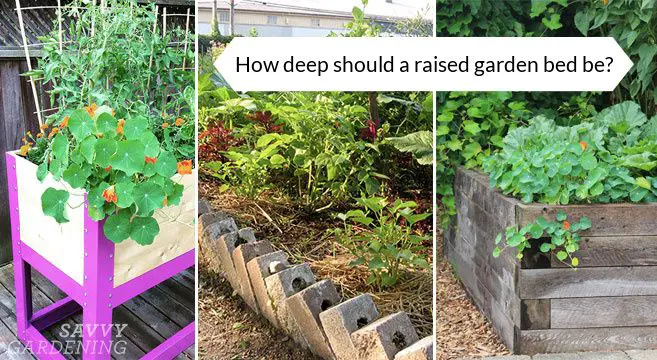When constructing a raised flower bed, one of the most important factors to consider is how deep to make it. The ideal depth of a raised bed allows for proper drainage and ample room for plant roots to spread and grow. In this article, we’ll discuss the key considerations for determining the optimal depth of your raised garden bed.
Page Contents
Key Factors for Determining Raised Bed Depth
There are a few key factors to take into account when deciding how deep your raised beds should be:
- Type of plants – Root depths vary widely, from shallow-rooted lettuces to deep-rooted perennials. Choose a depth that accommodates the deepest-rooted plants you want to grow.
- Drainage – Beds need adequate drainage to prevent waterlogging. Deeper beds drain better than shallow ones.
- Soil quality – Existing native soil may be shallow, compacted or poor quality. Deeper beds allow you to improve drainage and nourish plants by filling with amended soil.
- Climate – In cold climates, deeper beds provide more insulation for plant roots. In hot climates, they hold more moisture.
- Bed height – Higher beds are easier to tend without bending over. But soil depth should be proportional to bed height.
Recommended Raised Bed Depths
Taking these factors into account, here are some general guidelines for raised bed depths:
| Use | Recommended Depth |
|---|---|
| Shallow-rooted plants like lettuce, spinach | 6 – 12 inches |
| Deep-rooted plants like tomatoes, carrots | 12 – 18 inches |
| Extra deep for asparagus, artichokes | 18 – 24 inches |
| Tall beds for ease of access | Proportionate to height, 24 – 36 inches |
6-12 Inches
A depth of 6 to 12 inches is ideal for lettuces, greens, herbs and other shallow-rooted plants. This relatively shallow depth helps the soil warm up quickly in spring for early plant growth. The beds are also lightweight and easy to construct.
12-18 Inches
For deeper rooted vegetables like tomatoes, peppers, broccoli, carrots and others, a depth of 12 to 18 inches allows ample room for roots to spread downward. The added depth also helps conserve moisture during dry spells.
18-24 Inches
For perennial vegetables and fruits with very deep root systems, like asparagus, artichokes and berry bushes, a depth of 18 to 24 inches is recommended. The extra depth provides space for extensive root growth over many years.
24-36 Inches
For tall raised beds that bring the soil level up to waist height or higher, the soil depth should be proportional to the bed height to provide stability. Aim for a 2:1 ratio of width to height. For example, a bed 36 inches high would need a depth of 24 to 36 inches of soil to avoid tipping over.
Other Considerations
Here are some other tips for determining the best depth:
- Match depth to native soil – If your native soil is very shallow, make beds deeper to allow roots ample room.
- Consider water needs – Deeper beds hold more moisture, ideal for arid climates or drought-prone areas.
- Match to sunlight – Shallow beds work well for shade plants, while deeper beds are better for sun-loving plants.
- Add compost or other amendments to improve drainage and nutrients in native soil before filling beds.
- For trees and shrubs, a general guideline is to make beds no more than 2/3 the depth of the rootball.
Conclusion
The optimal raised bed depth depends on the plants you want to grow and your climate, soil and other site factors. For most home vegetable gardens, a depth of 12-18 inches provides versatility for a range of crops. Tailor the depth to the needs of your deepest rooted plants for best results. With adequate depth and enriched soil, your raised beds will enable your plants to thrive!
